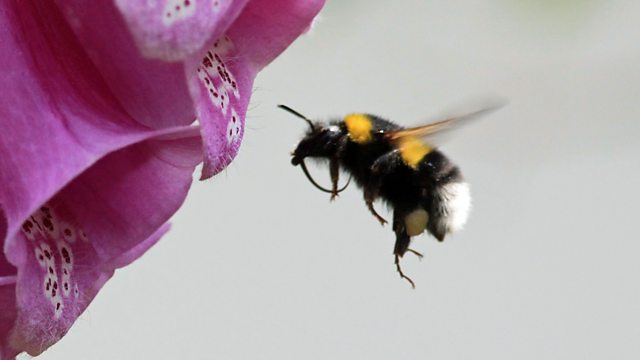Bees Attracted to Toxic Pesticides
Bees attracted to pesticides, 50 years of Moore's Law, and how traits of co-operation and tolerance evolved in dogs.
Some of the commonly-used neonicotinoid pesticides have been shown to pose a serious risk to wild bees according to two scientific studies in the journal Nature this week. In the largest outdoor field trial to date, looking at the effects of neonicotinoids on beneficial pollinating bees, the researchers found that the pesticide has a significant impact on the ability of wild bumblebees to form colonies, and on solitary bees to build their nests.
The second laboratory study showed the surprising finding that bumblebees do not avoid neonicotinoid-laced sugar solution, as had been speculated. But they seem to prefer toxin-laced nectar compared to food untainted with neonics, possibly due to drug-like effects on the insect鈥檚 brain. Neonicotinoids target the same mechanisms in the bee brain that are affected by nicotine in the human brain.
Fifty Years of Moore's Law
When Intel co-founder Gordon Moore wrote his 1965 paper Cramming More Components Onto Integrated Circuits, he made a bold prediction about the future of electronics. At the time, few people believed him, mostly because integrated circuits were so expensive. However, 50 years on, Moore's Law has come to define the computing industry. His famous prediction - that the number of components on an integrated circuit would double every year, has become a self-fulfilling prophecy for the computing industry. But will it last and what about the future?
Dogs
For thousands of years humans and dogs have been working and living together forming close bonds. We have bred them into myriad varieties from fluffy poodles to obedient border collie sheepdogs. But despite their varied appearance and characteristics, these dogs all share common ancestry - that of the wolf. How these (mostly) obedient pet pooches evolved to be 'man's best friend' from wild wolves is the subject of much debate. Newly published research is helping us understand how traits of tolerance and co-operation have aided domestication, helping to answer why dogs rather than wolves are the animals we would prefer to share our home with.
(Photo: A honeybee flying towards a flower 漏 Paul F. Donald)
Last on
More episodes
Previous
Next
Clip
-
![]()
Bumblebees prefer food containing neonicotinoid pesticides
Duration: 02:51
Broadcasts
- Thu 23 Apr 2015 18:32GMT大象传媒 World Service Online
- Thu 23 Apr 2015 23:32GMT大象传媒 World Service Online
- Fri 24 Apr 2015 04:32GMT大象传媒 World Service Online
Podcast
-
![]()
Science In Action
The 大象传媒 brings you all the week's science news.



